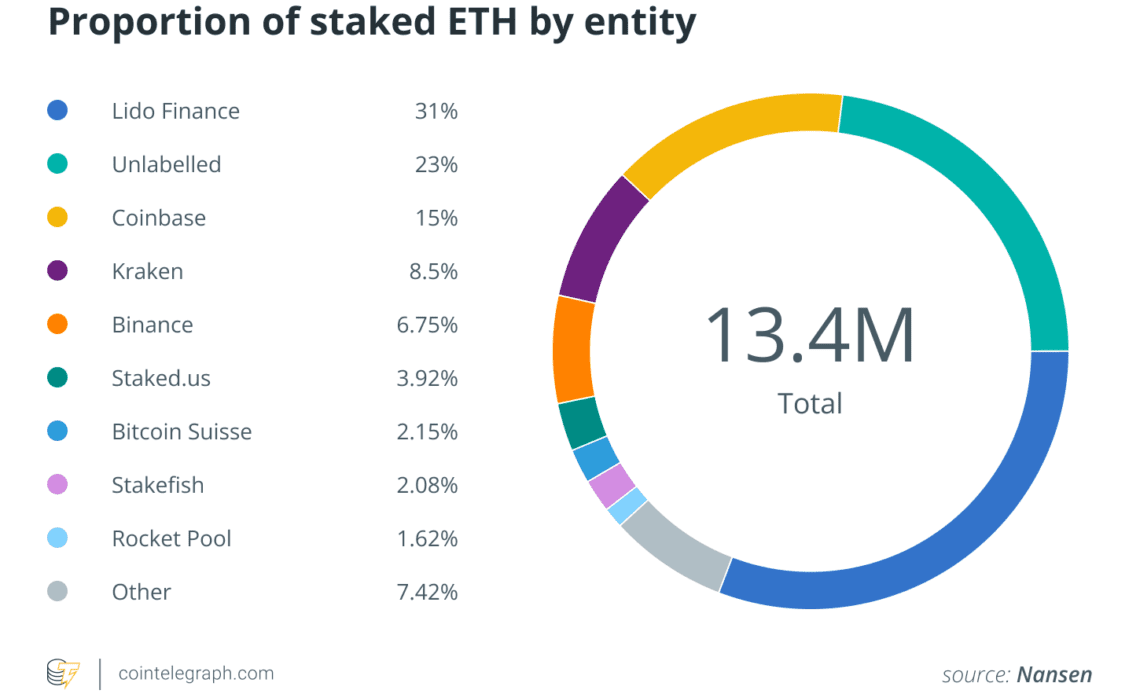A report from blockchain analytics platform Nansen highlights five entities that hold 64% of staked Ether (ETH) ahead of Ethereum’s highly anticipated Merge with the Beacon chain.
Ethereum’s shift from proof-of-work to proof-of-stake is set to take place in the coming days after final updates and shadow forks were completed in early September. The key component of The Merge sees miners no longer used as validators, replaced by stakers that commit ETH to maintain the network.
Nansen’s report highlights that just over 11% of the total circulating ETH is staked, with 65% liquid and 35% illiquid. There are a total of 426,000 validators and some 80,000 depositors, while the report also highlights a small group of entities that command a significant portion of staked ETH.
Three major cryptocurrency exchanges account for nearly 30% of staked ETH, namely Coinbase, Kraken and Binance. Lido DAO, the biggest Merge staking provider, accounts for the largest amount of staked ETH with a 31% share, while a fifth unlabelled group of validators holds 23% of staked ETH.
Lido and other decentralized on-chain liquid staking protocols were initially set up as a counter-risk to centralized exchanges accumulating the majority of staked ETH, given that these firms are required to comply with jurisdictional regulations.
Related: Experts weigh in on the Ethereum vulnerabilities after Merge: Finance Redefined
Nansen’s report stresses the need for Lido to be sufficiently decentralized in order to remain censorship resistant. Onchain data shows that ownership of Lido’s governance token (LDO) is concentrated, with groups of large token holders potentially carrying censorship risk.
“For example, the top 9 addresses (excl. treasury) hold ~46% of governance power, and a small number of addresses typically dominate proposals. The stakes for proper decentralization are very high for an entity with a potential majority share of staked ETH.”
Nansen also concedes that the LIDO community is actively seeking solutions to the potential risk of over-centralization, with initiatives including dual governance as well as a legally and physically distributed validator set proposed.
Given the ongoing slump in cryptocurrency markets, the majority of staked ETH is currently out of profit – down by ~71%. Meanwhile 18% of all staked ETH is held by illiquid stakers that are in-profit.
Nansen suggests that this category of stakers is the most likely to sell their ETH once withdrawals are enabled…
Click Here to Read the Full Original Article at Cointelegraph.com News…
























